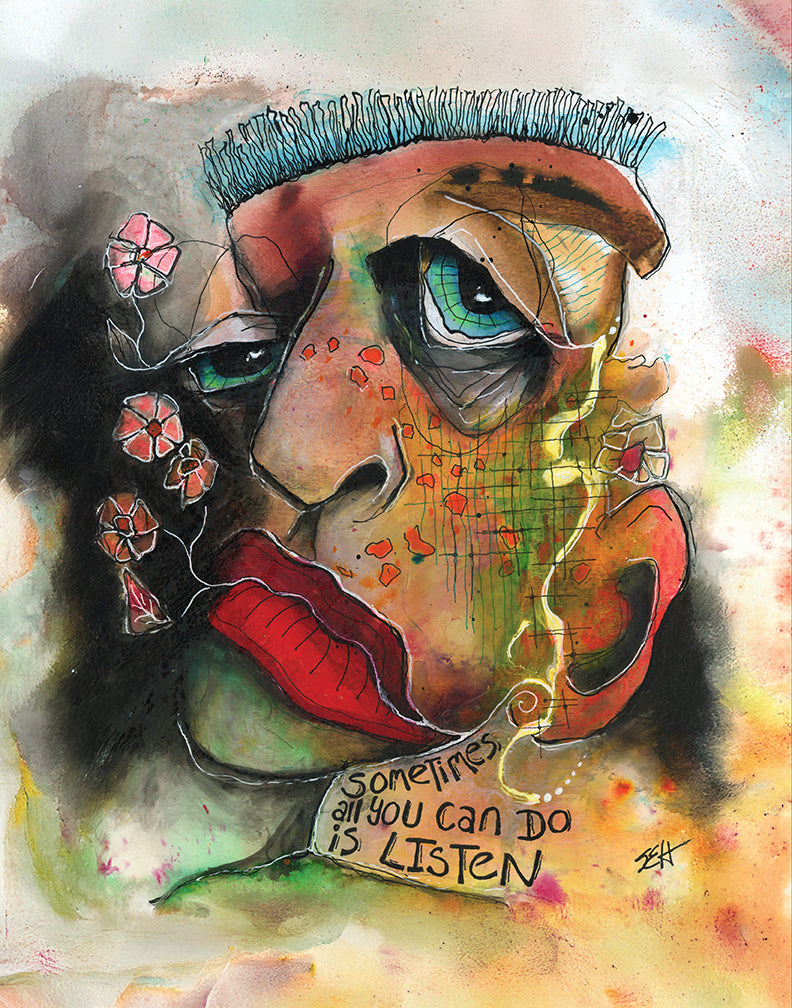
Then Things Got Weird
How To Make a Face
At this writing, I’ve been painting off and on for 62 of my 66 years. For the first five and a half decades, the goal was to paint “true to life.” I tried to behave, but from the beginning I was wandering around painting real people in imaginary settings. I had no training, no understanding of what I was doing, no explanation for the drive behind it all. The results were encouraging, and yet unsatisfying. Let’s just say I didn't give up my day job.

And Then
Things changed when I hit a wall of existential exhaustion a couple of years ago, as described in "The Dreaded Bio". Distorted and unrecognizable faces emerged - portraits of no one in particular, and yet everyone in particular. They came from childlike place, where marks are made and colors applied without the dread of failure or fear of judgement. They were twisted, but free. Perversely, in them I found my joy.
Making Faces
The process for making a face is unplanned, but closely observed. There is a call and response between me and the materials, with many possible outcomes for each brushstroke and pen mark, and more than one right answer to the new question each creates. There is no striving for realism - the distortions and exaggerations are the point.

Layers
Life happens in overlapping layers, and so do these works. I make collage papers using a gel plate and handmade stencils and stamps (see "Making Paper"). I tear them up and apply them generously to create a mosaic of color and texture, integrating the main subject with their surroundings.

Well, Hello There
I don’t set out with something I need to say, but something gets said before we're done. And I know when it is done. There is no question, no doubt, no argument in my mind when the expression is complete. It’s as if the universe has sucked it into place, and me along with it.

I hope you find something you enjoy here. I’m enjoying every minute of making it.